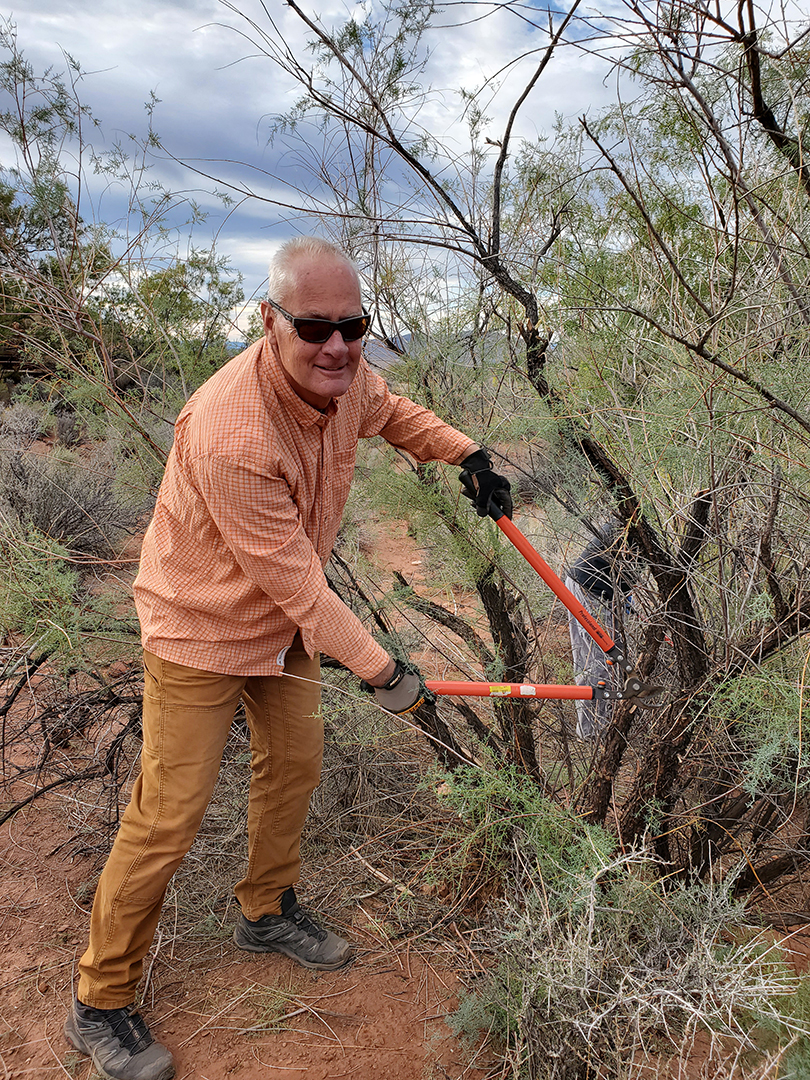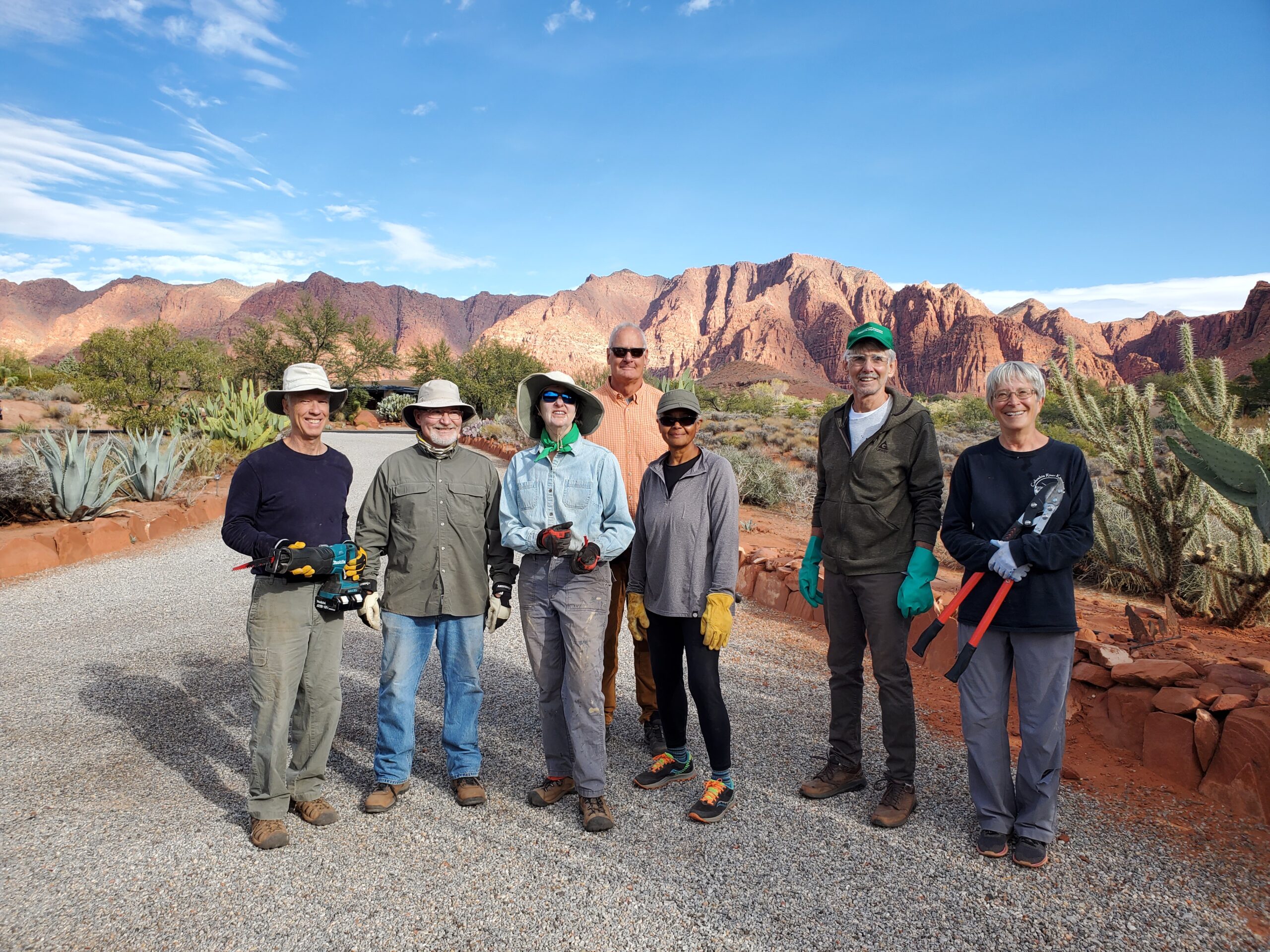
Volunteering to Make a Difference
In a world where division and disaster dominate the news, many turn to volunteering to add purpose and connection to their lives. In the Ivins community of Kayenta, a wealth of volunteer groups offer opportunities to make a difference.
At a recent Shonto Point HOA meeting, homeowners talked about their desires to see an increased sense of personal responsibility to the community, to develop a greater sense of community among residents, and to build on their appreciation for the beauty that surrounds us.
Volunteers with the Desert Preservation Initiative find exactly those rewards as they join in the effort to restore native ecosystems for the health and beauty of our shared environment.
Aaron Martin, retired from a career in manufacturing and corporate finance with General Electric and Pfizer, says “I enjoy the exercise, the chance to be outside, and the opportunity to meet new people.” He finds working with DPI “a great way to improve and to protect our beautiful slice of nature while also enhancing out residents’ enjoyment of their property.”
Scott Florence, who spent 38 years with the Bureau of Land Management, including dealing with invasive species such as tamarisk in five states, was motivated to join in “to help improve the natural habitats that we live in. Helping to rid our area of invasive species such as tamarisk is a no-brainer for me,” he says.
The work can be physical—cutting tamarisk and hauling it out of wash areas—or not, as others offer their service in photography, database management, writing and educational efforts. For those ready to get their hands dirty, as DPI secretary Terrence Walters puts it, “DPI now offers, at no cost, 1) weight training, 2) endurance training, and 3) muscle development to our friends and neighbors.”

Volunteer John Thomas, a retired civil engineer, finds the group’s “tamarisk removal efforts effective in restoring washes with native plants and importantly, in reducing wildfire risk.” In addition, he finds volunteering with DPI “easy because they are organized. I know well in advance when and where the work sessions are happening, the time schedule for work sessions are held to and there is good guidance on what role I can help with that day.”
Vice President Dan Beck manages volunteer scheduling and sends out regular updates, with fall workdays scheduled on Tuesdays, Thursdays, and Saturdays, and assignments for cutting and hauling brush and removing debris. “In our first season,” Dan reports, “a tremendous amount of tamarisk was removed, and significant seasonal rainfall totals encouraged native plants to resprout in areas where tamarisk had previously prevented growth.”
Ongoing work includes monitoring those areas regularly to address regrowth of tamarisk and to identify the return of native plants. Over time, where natives struggle to return, species identified as those that should do well at that specific site will be planted and monitored. “Volunteers are needed this season for both removal and monitoring,” Dan says.
John Thomas adds, “I’ve had fun and know that it is making a positive impact!” Scott Florence agrees. “I get a lot of good physical exercise and the camaraderie of working with others who are like minded in their goal to help make this a better place to live.”
Or, as Aaron Martin put it simply when asked what he gets out of it, “Dirty clothes, a (temporarily) sore back, and a big smile on my face.”

Won’t you join us? If you are interested in learning more, volunteering, or having a review of invasive plants on your property, please contact Chuck Warren, president, (chuckwarren222@ gmail.com) or Dan Beck, volunteer coordinator ([email protected]).